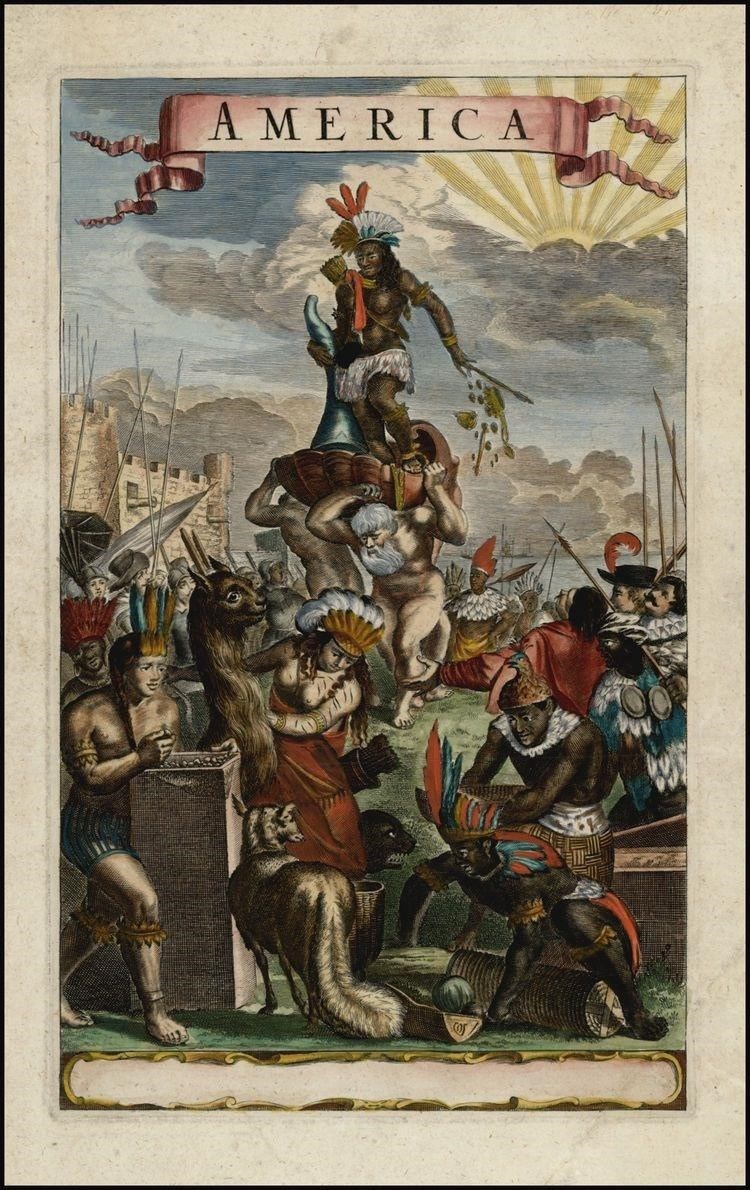John Ogilby’s America (1671)⁚ A Comprehensive Overview
John Ogilby’s 1671 “America” is a significant cartographic achievement of the Restoration era. Published in London by Ogilby himself, this large-format map offers a detailed, if somewhat romanticized, view of the New World. Its historical importance lies in its depiction of early colonial settlements and indigenous populations. Finding a 1671 PDF may prove challenging due to its age and rarity.
The Life and Works of John Ogilby
John Ogilby (c. 1600-1676), a fascinating figure of Restoration-era London, transcended a multifaceted career. Initially a dancing master and later a theatrical manager, Ogilby’s life took a dramatic turn after the Great Fire of London. He leveraged his skills and connections to become a prominent mapmaker and publisher. His remarkable output included geographical works covering vast territories, from Africa and Asia to the Americas. Ogilby’s “Britannia” (1675), a significant atlas of Great Britain, further cemented his reputation. Beyond maps, he was also known for his translations and publications, showcasing a remarkable breadth of talent and entrepreneurial spirit in a period of significant societal upheaval and rebuilding.
Ogilby’s “America” Publication Details⁚ 1671 Edition
John Ogilby’s “America,” published in London in 1671, stands as a testament to the ambition and skill of its creator. Printed by the author himself, a significant detail highlighting his entrepreneurial drive, the map’s dimensions are substantial, measuring approximately 40.7 x 27.1 cm (16 x 10.7 inches). This considerable size allowed for a level of detail uncommon in contemporary cartography. The 1671 edition likely employed copperplate engraving, a technique common in the period, which allowed for precise lines and shading. While specifics regarding the number of copies printed or the exact printing methods remain somewhat obscure, its rarity today suggests a limited initial print run. The physical attributes of the map, its scale, and its printing method contributed significantly to its impact and enduring historical significance.
Geographic Scope of Ogilby’s “America”
Ogilby’s “America” (1671) encompassed a vast geographical area, reflecting the then-current understanding of the continent. While the precise boundaries are subject to interpretation based on the map’s projection and level of detail, it almost certainly included significant portions of what are now the United States, Canada, and Mexico. The map likely extended from the northern reaches of exploration to the southern limits of Spanish colonial influence. Coastal regions, naturally, received more attention than the largely unexplored interior. The level of detail varied across the map; areas with established European settlements, particularly along the Atlantic coast, were more thoroughly charted than the less-known interior regions or the more distant western parts of the continent. The scope reflects the limitations of exploration and knowledge at the time, providing a snapshot of the then-known extent of the Americas.
Cartographic Techniques Employed in Ogilby’s “America”
Ogilby’s “America” map, while lacking the precise geodetic measurements of later cartography, showcases sophisticated techniques for its time. The map likely employed a combination of projections, perhaps incorporating elements of both cylindrical and conic projections to represent the vast expanse of the continent on a flat surface. The use of ornamentation was prevalent, including decorative cartouches, illustrative insets, and symbolic representations of flora and fauna. While not explicitly stated, compass roses and scale bars were almost certainly included to aid navigation and understanding of distances. The mapmaker likely relied on a combination of existing source materials, including earlier maps and accounts from explorers and colonists. The level of detail and the style of representation would have been influenced by prevailing cartographic conventions of the 17th century, prioritizing visual appeal alongside geographical accuracy within the constraints of the available knowledge.
Sources and Influences on Ogilby’s Mapmaking
Ogilby’s “America” (1671) wasn’t created in a vacuum; its creation drew upon a diverse range of sources reflecting the cartographic knowledge and colonial ambitions of its time. Existing maps, both European and potentially some early American cartographic efforts, likely served as foundational layers. Accounts from explorers, missionaries, and colonists provided crucial details about geographical features, settlements, and indigenous populations, shaping the map’s depiction of the landscape and its inhabitants. The prevailing geographical understanding of the era, which often combined accurate observation with speculation and hearsay, inevitably influenced the map’s content. Ogilby’s personal network and access to information as a prominent figure in Restoration London would have further enriched his source materials. The map’s style and presentation were undoubtedly influenced by contemporary cartographic conventions, reflecting the aesthetic preferences and technological capabilities of the time. The interplay of these diverse influences resulted in a map that reflects both the burgeoning knowledge of the Americas and the limitations of the era’s geographical understanding.

Analyzing Ogilby’s “America”⁚ Content and Context
This section delves into the specific content of Ogilby’s 1671 map of America, examining its portrayal of the New World within the historical context of 17th-century cartography and colonial expansion. Further analysis will explore its strengths, limitations, and biases.
Depiction of Indigenous Peoples in Ogilby’s Work
Ogilby’s portrayal of Indigenous peoples in his 1671 “America” map reflects the limited and often biased understanding prevalent in 17th-century Europe. While lacking the detailed ethnographic information found in later works, his depictions likely drew upon existing accounts from explorers and colonists, resulting in a generalized representation of various Native American groups. These depictions, often stereotypical and lacking individual nuance, should be interpreted within the historical context of their creation. The map’s scale and purpose as a navigational tool likely prioritized geographic accuracy over detailed cultural representation. The inherent limitations of the era’s knowledge regarding Indigenous cultures are evident in the generalized nature of the depictions, which often conflate distinct groups or depict them with broad, sweeping strokes rather than individual tribal characteristics. Interpreting these visual representations necessitates a critical awareness of the historical biases inherent in 17th-century cartography and colonial narratives. Further research into primary source materials of the time is crucial for a more nuanced understanding of the Indigenous populations of the Americas as represented, or rather, misrepresented, in Ogilby’s work. The lack of precise details and the tendency towards generalization reflect the limited interaction and understanding between European cartographers and Indigenous communities at the time.
Representation of Colonial Settlements and Activities
John Ogilby’s 1671 map of America provides a glimpse into the burgeoning colonial settlements of the era. While the level of detail varies across different regions, the map showcases the established coastal settlements of the English colonies, including significant population centers and major ports. The representation of these settlements is not purely geographic; it reflects the prevailing European understanding of colonial activity. For instance, agricultural activities may be suggested through symbolic representations, while urban areas are typically shown with more architectural detail. The map likely reflects the information available to Ogilby at the time, incorporating accounts from explorers, traders, and colonists. The extent of detail might also correspond to the perceived importance or accessibility of specific areas. Areas with greater European presence tend to receive more detailed representation compared to regions with less established colonial presence or those largely unexplored. This uneven distribution of information reflects the limitations inherent in early colonial cartography, where knowledge was often fragmentary and influenced by the perspectives and interests of the European colonizers. The map’s depiction of colonial settlements and activities serves as a valuable, albeit biased, snapshot of the New World’s early colonial landscape.
Ogilby’s “America” and its Relationship to Other Contemporary Maps
Understanding Ogilby’s “America” requires examining its relationship to contemporary cartographic works. While a direct comparison to every map of the period is impractical, analyzing key similarities and differences with other prominent maps of the Americas from the 1670s reveals significant aspects of Ogilby’s approach. Some maps may have shared similar source materials, resulting in overlapping geographical details or similar depictions of colonial settlements. However, Ogilby’s map likely distinguished itself through his artistic style and the integration of textual information, creating a more visually engaging and informative representation. Differences could stem from variations in the data available to each cartographer, leading to discrepancies in coastline delineation, the placement of geographical features, or the representation of indigenous populations. By studying these differences, we can understand the evolving understanding of the Americas during this period, and how Ogilby’s work fits within the broader context of seventeenth-century cartography. His map’s unique blend of artistic flair and geographical information likely contributed to its popularity, despite the existence of other contemporaneous maps of the Americas.
The Impact of the Great Fire of London on Ogilby’s Work
The Great Fire of London in 1666 significantly impacted John Ogilby’s life and career, indirectly influencing the production of his “America” map. While the fire didn’t directly destroy the materials used for the map’s creation, its consequences affected the broader context within which Ogilby worked. The devastation likely disrupted printing and distribution networks, creating delays and challenges in bringing the map to publication. The fire’s aftermath also presented both opportunities and obstacles for Ogilby. The rebuilding of London created a demand for new maps and geographical information, potentially boosting the market for Ogilby’s work. However, the economic upheaval and social disruption caused by the fire may have also affected his resources and the availability of skilled labor, potentially impacting the final product’s quality or timeline. The resilience demonstrated in publishing “America” amidst such a catastrophic event highlights Ogilby’s dedication and the importance of his work within a rapidly changing environment. The map itself, therefore, stands as a testament to both the challenges and the enduring spirit of the post-fire era.

Legacy and Significance of Ogilby’s “America”
Ogilby’s “America” remains a crucial primary source for studying 17th-century cartography and colonial perceptions of the New World. Its detailed depictions and artistic style continue to fascinate historians and map enthusiasts. Accessibility, however, remains limited due to the rarity of original copies.
“America” as a Primary Source for Historical Research
John Ogilby’s 1671 “America” map serves as a vital primary source for historical research, offering invaluable insights into the geographical knowledge and colonial perceptions of the New World during the Restoration period. Its detailed portrayal of colonial settlements, albeit sometimes idealized, provides crucial information about the spatial distribution of European presence and the ongoing processes of colonization. The map’s depiction of indigenous populations, while potentially reflecting biased perspectives of the time, offers glimpses into contemporary understandings (or misunderstandings) of Native American cultures and their interactions with European colonists. Analyzing the map’s cartographic choices – the selection of geographical features, the level of detail, and the overall presentation – allows researchers to infer the priorities and underlying assumptions of its creator and the broader society he represented. By comparing Ogilby’s work with other contemporary maps and accounts, scholars can further contextualize his portrayal of America and gain a deeper understanding of the evolving colonial landscape. The map’s inherent limitations, stemming from the constraints of available knowledge and technological capabilities of the era, must also be acknowledged and carefully considered during analysis. Therefore, utilizing Ogilby’s “America” requires a critical approach, balancing its inherent biases with its historical significance.
Ogilby’s Contribution to the Development of Cartography
John Ogilby’s “America” (1671), while not groundbreaking in terms of cartographic innovation, holds a significant place in the history of mapmaking. His contribution lies primarily in the dissemination and popularization of geographical knowledge. Ogilby, a skilled publisher and entrepreneur, utilized advanced printing techniques to produce a visually impressive and relatively accessible map. The large scale and detailed illustrations made the complexities of the New World more comprehensible to a wider audience than previous maps. Although relying on existing sources, Ogilby’s synthesis and presentation of information contributed to the standardization and refinement of cartographic representation. His work reflected a growing interest in geographical exploration and the expansion of European empires. While lacking the theoretical advancements of some contemporaries, Ogilby’s impact stemmed from the practical success of his publishing efforts. The “America” map, therefore, represents a notable contribution to the cultural and commercial aspects of cartography in the 17th century, furthering the spread of geographical information through visually compelling and widely circulated works.
Accessibility and Availability of Ogilby’s “America” (1671 PDF)
Securing a digital version of Ogilby’s 1671 “America” map in PDF format presents a challenge. The original map’s age and rarity significantly limit its digital availability. While some major historical archives might possess digitized versions, public access isn’t guaranteed. Many online repositories specialize in historical documents but may not include this specific map due to copyright restrictions or the lack of digitization efforts. Researchers may need to consult physical copies housed in libraries and archives specializing in cartography or 17th-century British history. Furthermore, the quality of any existing digital reproductions could vary considerably depending on the source and the scanning process. Therefore, locating a high-resolution, readily accessible PDF of Ogilby’s “America” (1671) requires dedicated archival research and potentially limited success. Expect challenges in obtaining a freely available digital copy. Libraries with extensive historical collections represent the most promising avenue for accessing this map, either physically or potentially via their digital resources.


















